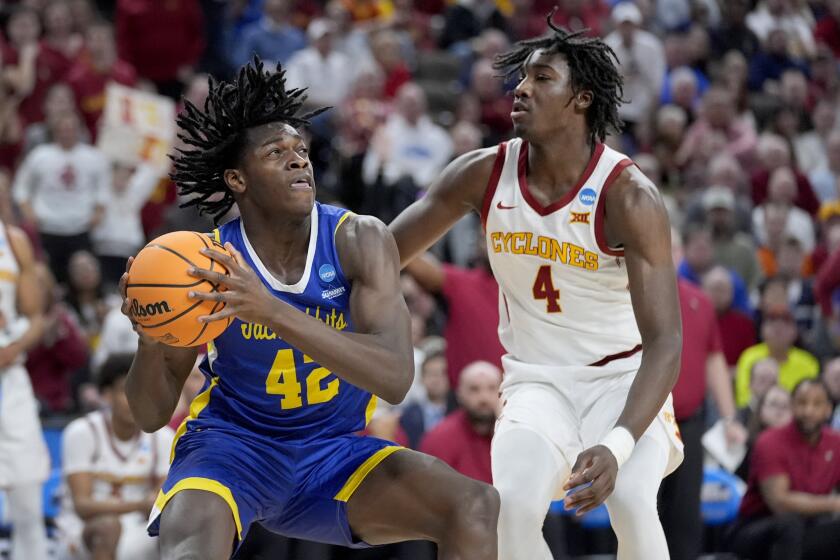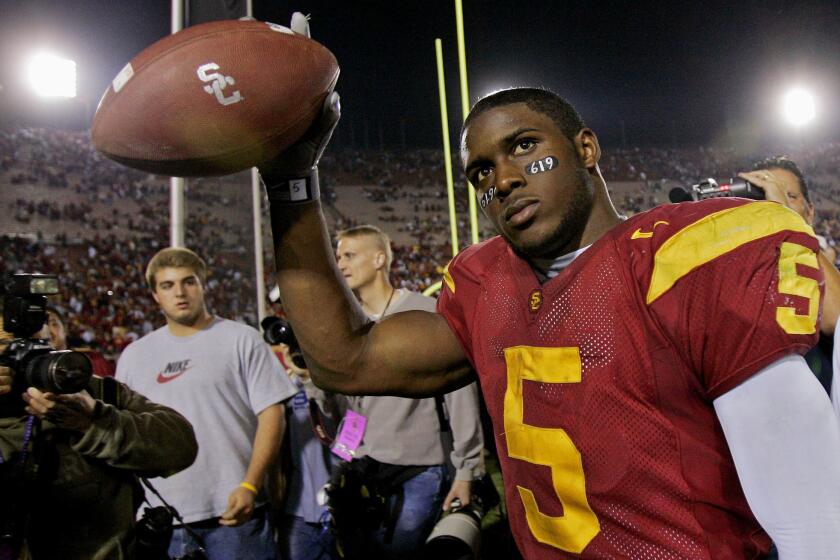NFL rookie receivers are having instant impacts in a changing game

John Madden returned the call Saturday morning. He was at a game, naturally, watching his 12-year-old grandson play flag football.
It was refreshing to hear Madden’s familiar voice talking football, particularly after the NFL’s most turmoil-filled few days in memory, one that pushed the Week 1 games deep in the background.
My interest was his take on this collection of rookie receivers, many of whom already look to be on a trajectory for stardom. There are Carolina’s Kelvin Benjamin and Tampa Bay’s Mike Evans, 6-foot-5 targets built like power forwards; Buffalo’s Sammy Watkins and New Orleans’ Brandin Cooks, both fast enough to melt artificial turf; and the little-known John Brown of Arizona and Allen Hurns of Jacksonville, who came up huge in openers.
Gone are the days when receivers needed a season or two to transition to the NFL, perfecting their routes behind seasoned veterans. These guys are instant-impact players.
“Here’s what it is,” Madden said. “There was a day when high school played one kind of football. The colleges played a different kind of football. And then there was pro football. So you could get a little experience in high school to play in college, but you kind of had to learn a new game. When you went from college to pros, you definitely had to learn a new game.
“If you look back, college was running, it was the wing-T, the split-T, option and all that stuff. It wasn’t a passing game. But now you look at high school, college, pros, youth football, and they’re all playing the same game, and it’s a passing game. All these seven-on-seven leagues, passing leagues they do in the summer, it’s like basketball.”
Even his grandson’s flag team experiments with shotgun, pistol and various spread formations. So a lot of these receivers in the NFL now have had years of practice in these types of systems, rather than weeks.
“There would be a time when a kid would come out of college and maybe in four years he would have caught 100 passes. Now maybe in four years he’s caught maybe a couple hundred passes. The same thing in high school. He may have caught 10 passes in high school in a year.”
And there’s something else: As zone blitzes became increasingly popular in the mid-1990s, quarterbacks had less and less time to hang onto the ball and go through progressions. The importance of making quick decisions was nothing new, of course, but it became even more essential to process information in a blink and get the ball out.
The way Madden sees it, that changed what people value in receivers, and increased the reliance on high passes and players capable of leaping up and snaring them.
“You look at all those touchdowns down there along the boundaries and in the end zone, most of those are height touchdowns,” he said. “That’s a new thing. We never used to throw it to them if they were covered that tightly, but now you throw it up there and use the height.”
That’s not to say jump-ball catches were entirely new. R.C. Owens, the late San Francisco 49er, made the “alley-oop” pass famous. But Owens-type receivers were the exception.
Madden, a Hall-of-Fame coach, said he used to bank on his receivers to use their speed and moves to create separation, rather than asking his quarterbacks to throw to a covered receiver and expect that man to outleap the defender.
But now, with the ball coming out so quickly after the snap, the receiver frequently doesn’t have those extra seconds required to make moves and create separation.
“You had to come up with something different,” he said. “You had to throw the ball high for the jump ball, throw it for the back shoulder. You had to anticipate a little more. Throw a lot more short passes. Throw a lot more of those screens, stuff to get rid of the ball quickly.
“You don’t see anyone making great moves anymore. The biggest moves are crossing patterns where a guy will come across and he can run away from the defense or get into a hole, pull up in a hole in a zone. It boils down to getting rid of the ball quicker, less time, less moves.”
Retired NFL receiver Tim Brown, a Hall-of-Fame finalist this year, said the path to productivity for a young receiver is much different now from when he was a rookie in the late 1980s.
“Playing the receiver game used to be a lot more detailed and technical than what it is now,” Brown said. “Now it’s really not. When you look at Kelvin Benjamin and Mike Evans, they’re the big guys so they’re going to do what they do, and that’s run down the field, jump over somebody’s head and score the touchdown. Run a slant route, get the first down.”
Brown said it’s getting to a point where those jump balls leave defensive players with a near-impossible task.
“You can’t defend it,” he said. “I can see defensive players in years to come begging the league to put a rule in to let them chicken fight with these guys when the ball’s up in the air. That’s the only chance they have. If you’re telling me that I can’t chicken fight with this guy who’s 6-5, 240 pounds and I’m 5-9, 5-10 or even 6 feet tall? I don’t have a shot.
“But if the league stays where it is now, it’s going to be very difficult for DBs in the future because they just won’t have a legitimate shot to make a play.”
For now, it makes for some entertaining play from receivers whose careers have barely begun.
“They’re not just giving these [rookies] these jobs,” Madden said. “They’re earning these jobs because they deserve them.”
More to Read
Get our high school sports newsletter
Prep Rally is devoted to the SoCal high school sports experience, bringing you scores, stories and a behind-the-scenes look at what makes prep sports so popular.
You may occasionally receive promotional content from the Los Angeles Times.







